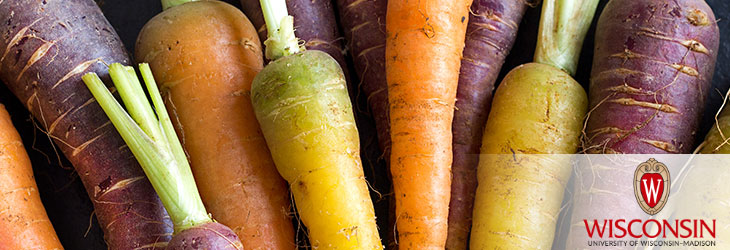Animals, Agriculture & Food

Progesterone Receptor Gene Is Associated with Increase in Conception Rate and Embyronic Survival
WARF: P090413US02
Inventors: Hasan Khatib
The Wisconsin Alumni Research Foundation (WARF) is seeking commercial partners interested in developing a novel SNP from the progesterone receptor (PGR) gene that is positively associated with both fertilization rate and embryonic survival.
Overview
Reproductive performance in high-producing dairy cows is declining. The decrease in fertility and early embryonic survival rate is a worldwide problem. It likely is caused by both genetic and environmental factors, although identifying specific genes associated with reproductive performance has been challenging. Because embryonic survival is a major contributor to cow fertility, identification of genes associated with this trait would facilitate genetic testing to enable quick and accurate evaluation of fertility in dairy cattle.
A UW–Madison researcher previously identified a single nucleotide polymorphism (SNP) in the STAT5 gene, which is associated with fertility and early embryo death in dairy cattle (see WARF reference number P06197US). The researcher also identified a SNP in the FGF2 gene that is highly correlated with embryonic survival (see WARF reference number P08266US), as well as a panel of SNPs from the interferon-τ pathway that is associated with fertility and embryo survival (see WARF reference number P09013US02). Identification of more genes associated with reproduction traits is needed to facilitate genetic testing of reproductive performance in cattle.
A UW–Madison researcher previously identified a single nucleotide polymorphism (SNP) in the STAT5 gene, which is associated with fertility and early embryo death in dairy cattle (see WARF reference number P06197US). The researcher also identified a SNP in the FGF2 gene that is highly correlated with embryonic survival (see WARF reference number P08266US), as well as a panel of SNPs from the interferon-τ pathway that is associated with fertility and embryo survival (see WARF reference number P09013US02). Identification of more genes associated with reproduction traits is needed to facilitate genetic testing of reproductive performance in cattle.
The Invention
Using an in vitro fertilization system, the UW–Madison researcher now has identified a novel SNP in the PGR gene that is associated with increased conception rate and embryonic survival in cattle. This SNP can be used to identify cattle with superior reproductive traits for breeding.
Applications
- Dairy cattle breeding to improve fertility and embryo survival
Key Benefits
- Provides additional genetic tools for use in selective cattle breeding to enhance fertility rate and embryonic development
- Useful as a breeding tool in enabling selection decisions to be made earlier than in traditional breeding programs, thereby shortening the generation interval for cattle breeding
- DNA markers are easy to measure, unambiguous and co-dominant.
Stage of Development
The researcher tested more than 5,000 oocytes from 300 cows for successful embryonic development using semen from 10 bulls. One specific genotype showed a statistically significant increase in both conception rate and embryonic survival as compared to the other two genotypes.
Additional Information
For More Information About the Inventors
Related Technologies
- WARF reference number P06197US describes the first reported gene, STAT5, to affect embryo survival in mammals.
- WARF reference number P08266US describes a SNP in the FGF2 gene that is highly correlated with embryonic survival.
- WARF reference number P09013US02 describes a panel of SNPs from the interferon-τ pathway that is associated with fertility and embryo survival in cattle.
Publications
- Driver A.M., Huang W., Gajic S., Monson R.L., Rosa G.J.M. and Khatib H. 2009. Effects of the Progesterone Receptor Variants on Fertility Traits in Cattle. J. Dairy Sci. 92, 4082-4085.
Tech Fields
For current licensing status, please contact Emily Bauer at [javascript protected email address] or 608-960-9842